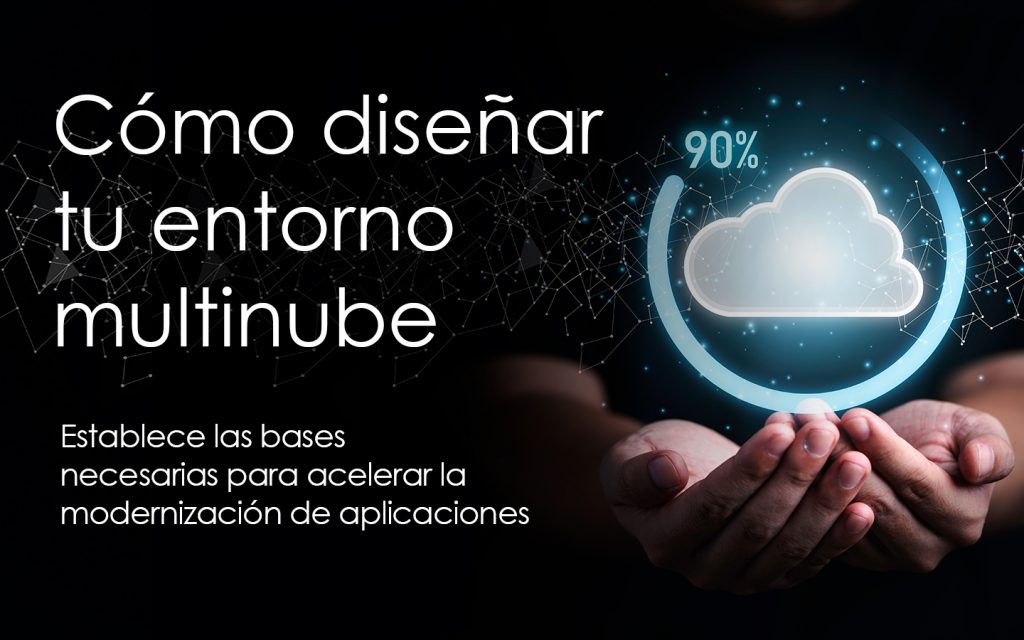
Multincloud Environment. According to International Data Corporation's (IDC) "Worldwide Quarterly Enterprise Infrastructure Tracker: Buyer and Cloud Deployment," spending on compute and storage infrastructure products for cloud infrastructure, including dedicated and shared environments, increased 6.6% year-over-year in the third quarter of 2021, reaching US$18.6 billion. By 2022, meanwhile, the consultancy expects cloud infrastructure spending to grow by 8.3% compared to 2020, to US$71.8 billion. These are decisive figures of a trend that has been marked for years: the constant and growing path of organizations to the cloud.
In this context, to take full advantage of the application portfolio and benefit from the innovation that will drive the business, it is no longer enough to have just one cloud, it is necessary to have multiple clouds, where each provider offers unique services and benefits with nuances with respect to innovation features.
It is also a scenario that adds new complexities, because with each cloud that is added to the "equation", the operating model becomes more complex:
- Operating costs are increased.
- Reputation and operations are put at risk.
- Little use made of scarce resources
In this sense, the professionals in charge of IT architecture play a key role in helping the organization to achieve the ideal state in the modernization of applications in multi-cloud environments.
How to design this new multicloud environment
When faced with any combination of clouds, our partner VMware recommends IT architects focus on five basic principles:
- Integrate flexibility: Design an environment that increases business agility by allowing each application to be deployed in the cloud that best meets your needs.
- Evolve without hindrance: Design an environment that reduces costs by allowing applications to be moved from one environment to another without refactoring.
- Seek operational simplicity: Design an environment that reduces complexity and improves security through the use of a unified operating model.
- Optimize resources to the maximum: Design an environment that minimizes learning curves by ensuring knowledge utilization for both developers and IT operators.
- Maximize automation investments: Design an environment that enables vertical scalability to be applied to automate the full range of operations.
Achieving that ideal state, with consistent management and operations in any cloud, requires thinking about how platforms are designed. Today, public clouds exist as vertically integrated silos but with little support for interoperability between disparate cloud environments. What is needed is an approach that provides a horizontal feature set that helps unify multi-cloud operations.
In conclusion, the multi-cloud environment offers companies greater flexibility, security and efficiency in managing their IT resources. By adopting this architecture, organizations can leverage the strengths of different cloud providers and reduce their dependency on a single vendor. However, to take full advantage of the benefits of the multi-cloud, it is necessary to have a clear strategy and effective management of resources across all clouds used.
Multinube environment
Multinube environment
Managing a database can have its complexities if we are not specially trained for it, ranging from simple problems to issues that could really become a "headache" for the company because, ultimately, it will affect access to information that is key to the business.
Do you want to know the benefits that RPA can bring to the HR area of your organization? A below, we share some of the keys to automate processes and routine tasks in this department, freeing your employees and routine tasks of this department, freeing your employees to focus on more strategic tasks. strategic tasks.

Perimeter
MFA 2FA - NGFW - WAF - AUTHENTICATOR

Access
NCA - CASB - EMS

Malware
EDR - EMS

Vulnerabilities
EMS - T.10 - T.SC







